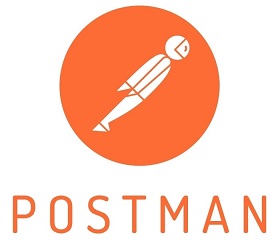Top 7 Automation Testing Tools to Consider
|
|
Automation has become indispensable in today’s dynamic software development landscape, where rapid releases and continuous integration are the norm. If you currently depend on manual testing to ensure the quality of your application or business. And now looking for automation testing tools to boost productivity and shorten the release cycle, this article is a good start.
Automation Testing Tools
We have listed here the top 7 automation testing tools that help you reach your testing goals faster, with less effort and cost.
Unit Testing: JUnit
It is an open-source framework for performing unit testing in Java applications. It provides a structure and tools for writing and executing unit test cases to ensure your methods or functions(units) work correctly.

Features
Below are JUnit features which are valuable for unit testing of Java applications:
Annotations: JUnit uses annotations such as @Test, @Before, @After, @BeforeClass, and @AfterClass to define and control test methods, setup, and teardown procedures. These annotations simplify test case management and execution.
Parameterized Tests with Datasets: You can run the same test cases with different datasets using the parameterized tests. These tests remove the redundancy and simplify the test execution.
Assertions: A variety of assertion methods like assertEquals, assertTrue, assertNotNull, and others make it easy to validate expected outcomes. When an assertion fails, JUnit provides informative error messages.
Test Runners: JUnit test runners facilitate the execution of test classes and methods. The default test runner, BlockJUnit4ClassRunner, executes test methods in a specified order. Custom test runners can be created to support different testing requirements.
Test Suites: The @Suite annotation allows you to run a collection of related tests as a single suite, making it easier to manage large test suites.
Timeouts: JUnit allows you to set timeouts for individual test methods. It verifies that they are completed within a specified time, and stuck tests are identified.
Categories: Using the @Category annotation, you can categorize tests into groups and run tests belonging to specific categories as needed.
Rules: Customized test rules define and control the test execution. For example, use test rules to manage your test resources, environment variables, or test database connections.
Test Discovery: This feature is extremely useful in automated CI/CD environments to discover and execute tests automatically. It does not require manual test suite creation or maintenance.
Integration with Build Tools: You can seamlessly integrate JUnit with build tools like Maven or Gradle and easily embed automated testing into your CI/CD pipelines.
API Testing: Postman
Postman is a highly popular API(Application Designing Interface) designing, building, modifying, and testing platform. Its sleek and user-friendly interface allows various testing scenarios, bypassing any code-writing requirement.

Features
Below are the Postman features which make it a great choice for API automation testing:
User-Friendly Interface: Postman has an intuitive interface to execute API tests. You just need to fill in the header details, select the HTTP method, and click the send button. You need not worry about the implementation and code behind all these requests.
Create HTTP Requests: Create HTTP requests using New > HTTP or opening a new tab using +. Then, you can mention the details on the UI, such as request headers, URLs, parameters, body, etc., for various methods, i.e., GET, POST, PUT, DELETE, etc.
Collections: Postman supports better collaboration and organization as you can group related API requests into collections, which are saved in folders. Any number of folders can be created inside a collection, which makes it easy to share and export within a team.
Supports Environment Variables: It is super convenient to test APIs across different test environments by saving and reusing the environment variables. This increases the reusability, efficiency, and collaboration of API testing.
Test Automation: If you wish to perform unit, regression, functional, integration, and mock automated tests, you can write testing scripts in JavaScript to validate API responses. Postman also integrates with CI/CD tools to allow automated build testing.
Assertions and Post/Pre Scripts: Assertions validate whether the expected and actual results match after the test run and then fail or pass the tests based on them. Use assertions to check status codes, response body content, headers, etc.
Pre-request scripts are executed before the API test, and post-request scripts are executed after the test. These are useful for processing request data before a test or extracting required data from responses after the test run.
Test Runner: This capability lets you execute multiple requests individually or in parallel as per the requirements of the tests. Postman’s Runner is convenient when you want to chain together multiple requests for automated testing.
Integrations: Use integrations to share data from Postman to monitoring, test management, defect tracking, CI/CD tools, etc.
Cross-Browser Testing: LambdaTest
LambdaTest provides cloud-based infrastructure and extensive browser and device coverage. It is a valuable resource for teams looking to perform automated testing on various configurations quickly and efficiently.

Features
Here is the list of LambdaTest’s features::
Cross-Browser Testing: LambdaTest supports automated desktop and mobile tests across 3000+ browser environments to quickly validate application compatibility.
Parallel Testing: LambdaTest supports parallel test execution using TestNG, Selenium, Appium, etc., integrations.
Comprehensive Integrations: It integrates with popular test automation frameworks such as Selenium, testRigor, WebDriverIO, etc. Run your existing automated test scripts on the LambdaTest cloud infrastructure using these integrations.
Testing on Real Devices: LambdaTest provides access to thousands of real devices to execute automated tests.
Screenshot and Video Recording: Captures screenshots and records video recordings of your test session, which is helpful in identifying potential issues.
Local Testing: Test on your local machine by tunneling your application through LambdaTest’s secure tunnels.
Test Logs and Reports: LambdaTest provides detailed test logs and reports, allowing you to track test results and analyze failures. It also integrates with popular CI/CD platforms for seamless reporting and integration into your automated testing pipeline.
Performance Testing: Apache JMeter
Apache JMeter is an open-source, Java-based performance testing tool mainly used for load and stress testing.
Features
The below features make JMeter one of the leaders in the performance testing landscape:
Load Testing and Stress Testing: JMeter’s core functionality centers around load testing and stress testing. It allows you to simultaneously simulate many users or virtual users (threads) making requests to a web server or application.
Protocol Support: Provides versatile support for many protocols, including HTTP, HTTPS, FTP, SOAP, REST, JDBC, JMS, etc.
User-Friendly GUI: A User-friendly GUI (Graphical User Interface) allows you to quickly create test plans and execute test scenarios.
Data-driven Testing: Parameterized test cases use variables instead of hard-coded values to support data-driven testing. You can connect to and use different data sources in the test scripts.
Assertions: JMeter includes a variety of assertion types (compares actual and expected results) to validate the responses received during run time.
Distributed Testing: It is applied to test load on websites and server applications spread across multiple machines. Use JMeter in distributed mode and imitate many concurrent application users.
Plugins and Extensibility: You can add custom functionality and integrate with third-party plugins. An active community develops and maintains various plugins to extend JMeter’s capabilities.
Integration with CI/CD: JMeter can be integrated into CI/CD pipelines to automate performance testing in continuous development. Performance tests should run once automatically the code is built to confirm that it behaves as the developers expect.
End-to-End Testing: testRigor
testRigor is a robust test automation tool that leverages generative AI and the latest machine learning algorithms. It uses AI to automate test case generation/creation, execution, and maintenance. It aims to resolve the testing challenges associated with traditional manual testing and test automation.

Features
See the top AI-powered features of testRigor below, which provide incredible results with the least effort and cost:
Quick AI and NLP-based Test Creation: Use any of the below in-built test creation methods to create test scripts quickly and easily:
- testRigor’s generative AI algorithms automatically generate test cases within seconds. Write the test case name in the title, and the generative AI engine automatically generates the steps.
- Forget about programming languages and unstable CSS or XPath locators. Write test cases in plain English using Natural Language Processing (NLP).
- Use the testRigor recorder to record your actions on the application UI as test cases in plain English, add assertions, and edit as you choose.
Codeless Testing: testRigor aims to simplify test automation by using codeless test scripts. This feature makes test creation and maintenance accessible to various team members, including non-developers, BAs, sales, and marketing teams.
Expansive Coverage: You can execute automation tests on the web, mobile, and desktop in parallel, continuously, to achieve comprehensive test coverage using a single tool.
Cross-Browser and Cross-Platform Testing: testRigor supports seamless cross-browser and cross-platform testing on real devices, ensuring your application functions correctly on various browsers and operating systems.
API Testing: Besides UI testing, testRigor supports API testing easily, allowing you to automate testing your application’s backend services and APIs.
Visual Testing: testRigor includes visual testing capabilities that help detect visual regressions by comparing screenshots of different test runs.
Self-healing Tests: Reduce test maintenance effort drastically by using testRigor. It automatically updates tests when the application’s UI or element locators change. This feature helps keep tests always up to date and reduces maintenance overhead.
Test Data Generation: testRigor can generate test data for your test scenarios based on detected field type (supports about 50+ types). You can provide your test data and use testRigor to create random data conforming to a specific format.
Email, 2FA, SMS, Call Testing: testRigor further simplifies your test scripts by providing built-in support for email, 2FA, SMS, and phone call testing.
Seamless Integrations: testRigor supports integrations with (CI/CD) pipelines, ERP systems, infrastructure providers, test management tools, etc.
Security Testing: OWAS ZAP
OWASP ZAP (Zed Attack Proxy) is a widely used open-source security testing tool developed by the Open Web Application Security Project (OWASP). It is designed for finding security vulnerabilities in web applications during various stages of development, including automated security testing.

Features
To manage the security testing of your application, you can evaluate the below OWAS ZAP features:
Proxy Interception: The primary feature of OWAP ZAP called Breakpoints allows you to intercept a request from your browser and change it before it is submitted to the web application you are testing.
Automated Scanning: Start ZAP and click the Quick Start tab of the Workspace Window to detect common web application security threats and vulnerabilities.
Active and Passive Scanning: Two types of vulnerability scanning techniques are used in web application security testing- active and passive; ZAP can perform both.
Spidering: ZAP’s spider feature navigates through an application, discovering and mapping its structure for complete test coverage.
Session Management: Helps in maintaining user sessions and cookies during testing. This helps in simulating real user behavior with the application.
Automation Scripts: You can create custom automation scripts to integrate ZAP’s functionality into your testing workflows.
Integration with CI/CD: ZAP can easily be integrated into continuous integration and deployment (CI/CD) pipelines.
Analytics: Datadog
Datadog is a cloud-based IT monitoring, operations, and analytics platform. It provides real-time insights and observability into the performance and behavior of applications, services, infrastructure, servers, and cloud environments.

Features
Datadog’s features, which help in real-time monitoring/analytics of the applications or services are:
Application Performance Monitoring (APM): Monitor the performance of your application code in real-time through Datadog’s APM capabilities.
Infrastructure Monitoring: Provides visibility into server metrics, containers, virtual machines, and cloud resources to identify infrastructure-related issues.
Real-Time Metrics: You can monitor the behavior of your applications during test execution as Datadog collects and displays real-time metrics and traces.
Log Management: Datadog’s log management features enable you to collect and analyze logs generated during test execution.
Synthetic Monitoring: Set up synthetic tests that simulate user interactions with your application. Proactively monitor the availability and performance of your application endpoints, including those used in automation tests.
Integration with CI/CD Pipelines: Datadog can seamlessly integrate into your continuous integration and deployment (CI/CD) pipelines.
Anomaly Detection: Uses machine learning to detect anomalies in your application and infrastructure metrics.
Traceability: Datadog provides distributed tracing capabilities, allowing you to trace the path of requests and transactions through your application stack.
Conclusion
An expert is someone who has succeeded in making decisions and judgments simpler through knowing what to pay attention to and what to ignore – Edward de Bono.
The decision about selecting the perfect test automation tools is crucial since it further affects the software’s ROI, cost, efforts, and success. Various factors shape this vital decision: testing objectives, environments, budget, tool capabilities, and team skills.
When AI-powered, intelligent tools such as testRigor are used, they can significantly improve software quality, reduce maintenance effort, and enable you to build more efficient testing processes singlehandedly within your budget.
| Achieve More Than 90% Test Automation | |
| Step by Step Walkthroughs and Help | |
| 14 Day Free Trial, Cancel Anytime |












